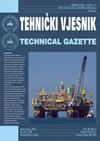优化算法在空客A330货机货物分配计算中的应用
IF 1.4
4区 工程技术
Q3 ENGINEERING, MULTIDISCIPLINARY
引用次数: 0
摘要
本文章由计算机程序翻译,如有差异,请以英文原文为准。
Application of Cargo Distribution Computation in Airbus A330 Cargo Aircraft with Optimization Algorithms
: Weight and balance problems are one of the main reasons for cargo aircraft accidents including around 30% of accidents that are due to Center of Gravity (CG). Because the pilots often calculate CG index using Load & Trim Sheets manually or use a set of simple formulas, in these calculations, it is only checked whether CG index is within the safe zone instead of determining the ideal value. In order for the safety and fuel economy to be maximized in an aircraft, CG index should be calculated at the ideal value given in the Aircraft Handling Manual. Due to safety and cost concerns, airline companies prefer non-commercial optimization solutions. Therefore, we proposed new heuristic approaches that have been motivated by a real-world application for a major airline company. First, we applied standard GA, WSA, PSO algorithms to obtain a solution that is as close as possible to the ideal CG index in an Airbus A330 cargo plan. Then, we modified standard WSA and PSO algorithms to decrease the error value and to better achieve the ideal CG index. These proposed heuristic solutions have the potential to help the pilots flying cargo aircraft with maximum safety and minimum fuel consumption.
求助全文
通过发布文献求助,成功后即可免费获取论文全文。
去求助
来源期刊

Tehnicki Vjesnik-Technical Gazette
ENGINEERING, MULTIDISCIPLINARY-
CiteScore
1.90
自引率
11.10%
发文量
270
审稿时长
12.6 months
期刊介绍:
The journal TEHNIČKI VJESNIK - TECHNICAL GAZETTE publishes scientific and professional papers in the area of technical sciences (mostly from mechanical, electrical and civil engineering, and also from their boundary areas).
All articles have undergone peer review and upon acceptance are permanently free of all restrictions on access, for everyone to read and download.
For all articles authors will be asked to pay a publication fee prior to the article appearing in the journal. However, this fee only to be paid after the article has been positively reviewed and accepted for publishing. All details can be seen at http://www.tehnicki-vjesnik.com/web/public/page
First year of publication: 1994
Frequency (annually): 6
 求助内容:
求助内容: 应助结果提醒方式:
应助结果提醒方式:


